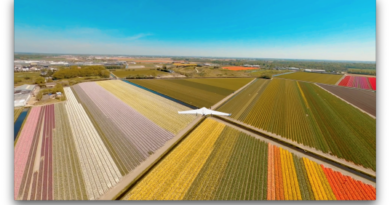How Drones are Helping with Sustainability in the Wine Industry
![]()
Guest post by Indiana Lee
The last two decades have seen the hottest temperatures on record. Today, it is more important than ever for industries around the world to embrace sustainability as central to their business. We’re seeing climate change cause fluctuating weather patterns, unexpected temperatures, and water shortages. One industry, however, is adapting quickly. Winemakers are turning towards sustainable practices—and using drone technology to do so.
How Can Drones Help?
To put it simply, drones allow us to see what we otherwise cannot. They are equipped with sensors to scan and survey the regions below them. Infrared cameras capture imagery in bright colors that, as Ashutosh Natraj, Vine Rangers’ co-founder points out, would otherwise appear as flat, beige pieces of land to the naked eye.
These cameras capture data about plant and soil health, water content, pests, and other potential threats. This is key information for maintaining a healthy vineyard. Winemaking is expensive, something that traditionally relies on a lot of physical manpower. Given the size of vineyards, they can be extremely time-consuming to maintain. In an industry that requires a lot of land and human capital, drones offer the advantage of monitoring these areas in a fraction of the time it would take on foot. They can navigate steep slopes and fly closer to the surface of crops, often providing more accurate images than satellites would.
Access to this kind of data can be a boon to winemakers. Drones give them a birds-eye view of their crop and allow them to precisely target areas that need attention. This data-driven approach helps remove some guesswork from the equation while improving efficiency. It can also help conserve what is perhaps a vineyard’s most valuable — and most threatened — resource: water. GPS tagging can pinpoint problem areas, cutting down the need to scout for them on foot.
The list of threats to crops is long — disease, water stress, pests, and more. If you can identify those threats early on, you can cut down on your scouting costs and waste fewer resources in mitigating them. Ultimately, you improve your bottom line.
Going Green: Drones, Solar Power, and Wine
Another key to sustainable winemaking is the move towards green energy. Green energy refers to renewable sources of power, such as hydro, wind, and solar energy. These ‘clean’ power sources are produced with a negligible environmental impact. Unlike fossil fuels, they do not give out the greenhouse emissions that contribute to global warming. Because it comes in so many different forms, green energy can be harvested according to what best suits the environment around you. For vineyards, that often means turning to solar power.
Solar power harvests energy from sunlight, using solar panels to convert it into electricity. For much of the wine industry, this seems like an obvious match. Take California, for example, one of the largest producers of wine in the USA. The state has sunshine year-round and ample open space on which to set up solar panels. These panels are reliable, long-term sources of clean energy — so much so that they often give you excess energy to spare, offering high returns on investment.
Drones come in handy here too. From accidents during maintenance to harsh weather conditions like extreme heat, sustainability monitoring involves a significant amount of risk for workers. Much like monitoring agricultural aspects of a vineyard, drones can assist in monitoring the condition of solar panels. Not only does this improve worker safety, but efficiency when it comes to maximizing solar panel use.
Does Any of This Affect the Quality of My Wine?
Embracing technology does not mean sacrificing quality. Winemakers agree that consistency and uniformity are key to a good bottle of wine. While it may not sound as romantic, the use of drones helps achieve exactly that. Maintaining the same standard for all your grapes will naturally result in a better-tasting bottle, no matter the price range. A healthy crop will only positively impact its taste. Sustainable winemaking is a growing movement, with several vineyards producing top-tier wines as they progress towards a more eco-friendly future.
The use of drone technology is not without its limitations. As with any new technology, regulations on drones are still a work in progress. The questions of data collection and privacy still loom large. However, the use of clean energy and drone technology to help conserve and target resources is today, more relevant than ever. They can also go hand-in-hand with age-old agricultural techniques. Planting cover crops and simple composting methods can improve soil health.
Data-driven farming improves both water and worker efficiency while conserving valuable resources. That data can also aid in predicting future fluctuations and threats, allowing winemakers to allot their resources as needed. For an industry where time is a most valuable asset, embracing these steps will be crucial in building a future that’s not only sustainable and greener but financially viable as well.



